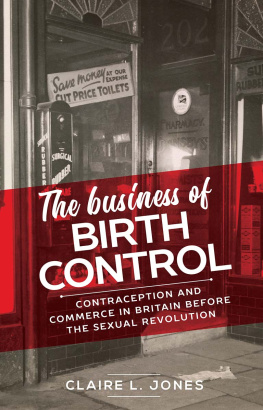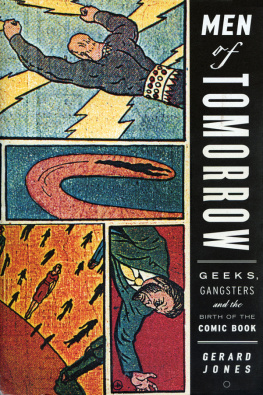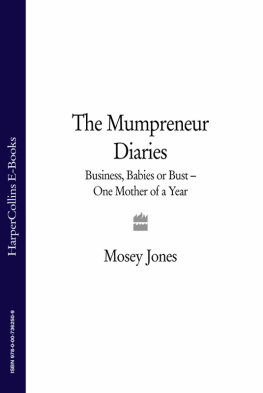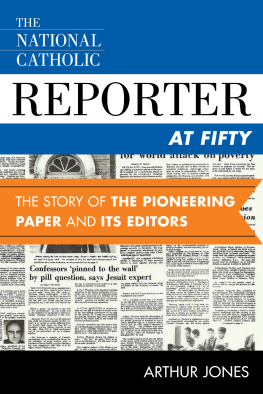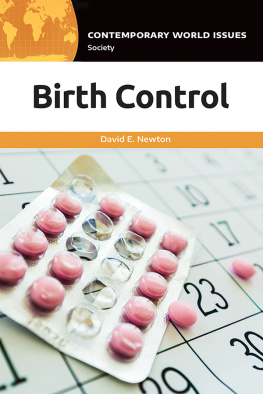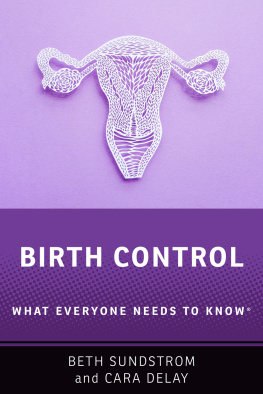There are many people who have helped me in the long journey to getting this book published. Numerous temporary and short-term employment contracts in universities and in museums has meant that this book has been ten years in the making. I began to think about the commercialisation of contraceptives during my PhD research on medical trade catalogues where I came across numerous advertisements and catalogues promoting condoms, pessaries and other contraceptive goods. I had the opportunity to develop these thoughts in a postdoctoral project at the University of Warwick in 2010 and 2011 and would like to thank the Department of History for supporting my work during that year. Particular thanks go to Professors Hilary Marland and Roberta Bivins for their unwavering support and kindness during my first foray into postdoctoral life and for making my experience so positive. I was then fortunate enough to be able to engage public audiences with my early research at the Infirmary Museum, Worcester, and would like to thank Catriona Wilson for giving me that opportunity. My research continued when I returned to the University of Leeds in 2012 and I would like to thank the staff in the Centre for the History and Philosophy of Science and Alan Humphries at the Thackray Medical Museum for their enthusiasm and guidance on this project. The project moved with me to Kings College London in 2014 and it was here that I began to shape my research into a book. I would like to thank colleagues in the Department of History at Kings College; the Centre for the History and Philosophy of Science, University of Cambridge; the London School of Hygiene and Tropical Medicine; the Centre for the History of Medicine at the University of Birmingham and participants in the 1920s and 1930s Network for hosting presentations of my research and for insightful comments from the audiences. I finally had the time and space to write the book during my lectureship, my first permanent post, at the University of Kent from 2016 and I would like to thank all colleagues in the School of History for their support in allowing me to finish this project. Beyond Kent, a number of colleagues were keen to see my work on this topic appear in book form and I would particularly like to thank Jesse Olszynko-Gryn, Jessica Borge, Laura Kelly and Caroline Rusterholz for convincing me that this book would be something people would be interested in reading. I hope that remains the case and the book meets expectations. Thanks too to Emma Brennan and the team at Manchester University Press, who have been a pleasure to work with. Huge thanks are also due to Dr Dominic Berry, Professor Chris Lawrence and Dr Emily Manktelow, who generously offered their time and expertise to read through the manuscript in its various drafts; their input has been invaluable. Finally, I would like to thank my family, friends and my husband for their unending love and support. Without them, this book would not have been completed.
The problem of the modern conscienceless commercialisation of the sale and advertisement of contraceptives is a different matter from that of birth control per se.
Alison Neilans, Exploitation of vice, Edinburgh Evening Dispatch(20 February 1937)
In 1937, Alison Neilans (18841942), social reformer, suffragist and secretary of the Association for Moral and Social Hygiene, reported her views on birth control in the British press. As secretary of an association long concerned with curbing moral vice, Neilans was all too aware of the volume and diversity of contraceptive goods that had become widely commercially available since the First World War. Indeed, the interwar period was a pivotal moment in the unfettered growth of markets for rubber caps, chemical pessaries, spermicidal foams, liquids and lotions, enemas, douches, reusable rubber sheaths and disposable latex condoms.

